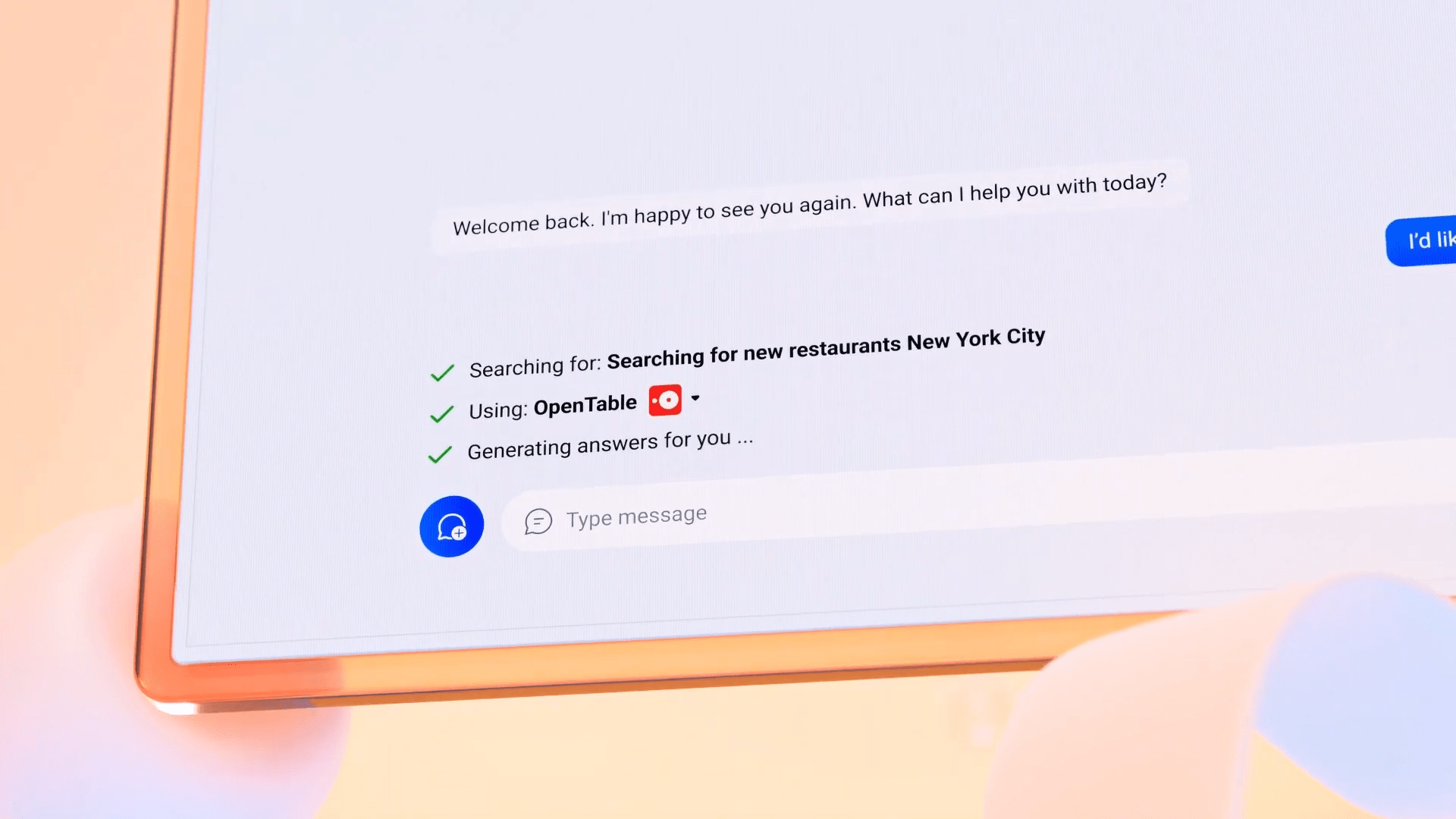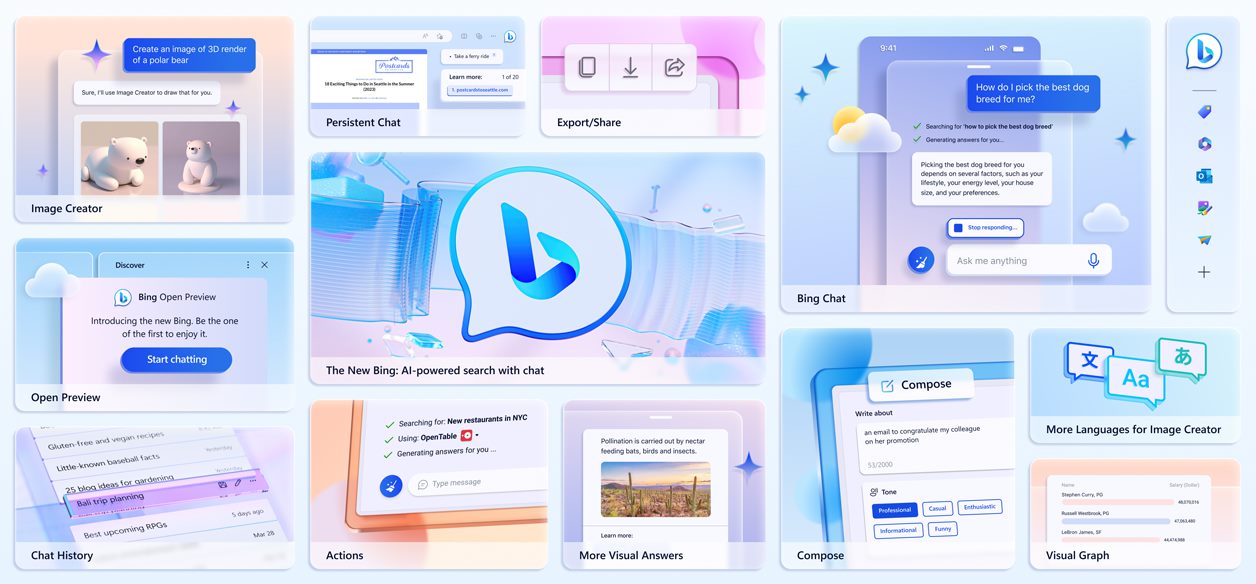Bing Chat now available to everyone as Microsoft tries to build a new web ecosystem

Microsoft continues to tweak its chatbot interface for the web: The company is improving Bing Chat with plugins and more features, while also making it available to everyone.
No more waiting list for Bing Chat: All users can now access it through Microsoft's Edge browser or the Bing smartphone app. Bing Chat uses a free variant of GPT-4 combined with Microsoft's Turing language models.
"Moving from a product to a platform"
Some of the new features in Bing Chat include images and video in chat responses, a ChatGPT-style chat history, plugins, and better integration with Edge. When you switch from chat to a webpage, the chatbot remains available in a sidebar. It can answer questions about the webpage's content. Microsoft calls this "persistent chat."
Perhaps the most interesting new feature is Bing Actions. This seems to be directly related to the plugins: Here, the Bing bot can perform actions such as making a restaurant reservation directly in the chat interface. The bot can also launch the appropriate video service in case of a video recommendation.
Microsoft is partnering with OpenTable for restaurant reservations and Apple TV for video streaming. Other plugin partners include Wolfram Alpha for visualizations and, of course, OpenAI for developer access. Microsoft is likely to announce more partners before Actions and Plugins launch in a few weeks.
Chatbot as web interface
All of the new features in Bing Chat contribute to Microsoft's goal of positioning chat as the "co-pilot for the web." The features make it clear that, if successful, the chatbot will take over more and more of the tasks that people do on websites today. It could significantly change the content ecosystem on the web.

In parallel with Microsoft's feature push, OpenAI is also launching a wider rollout of its browsing and coding plugins for ChatGPT. Google is working on a competing product, Bard, and plans to unveil new features at its own I/O 2023 developer conference next week.
AI News Without the Hype – Curated by Humans
As a THE DECODER subscriber, you get ad-free reading, our weekly AI newsletter, the exclusive "AI Radar" Frontier Report 6× per year, access to comments, and our complete archive.
Subscribe now